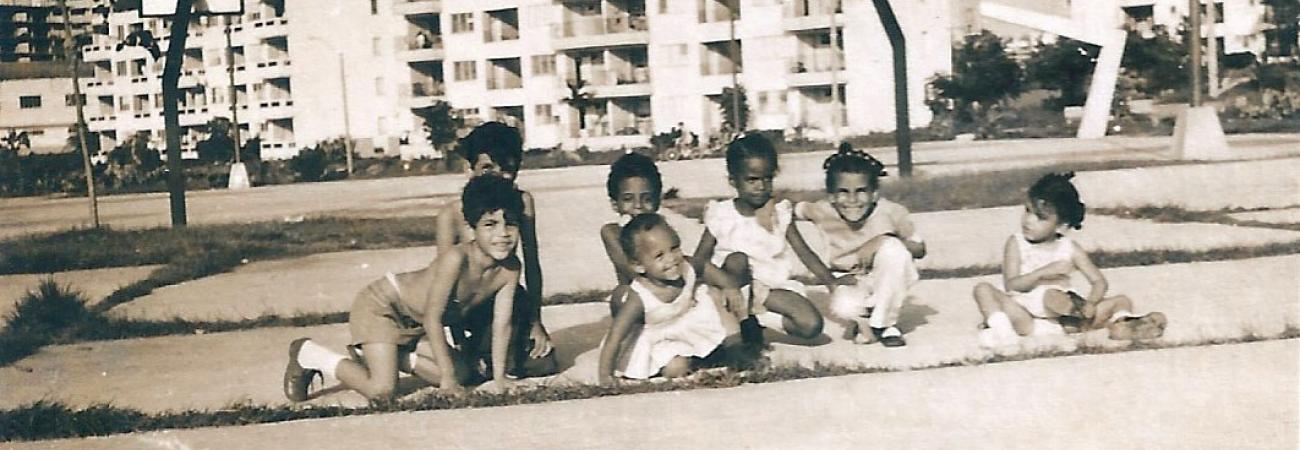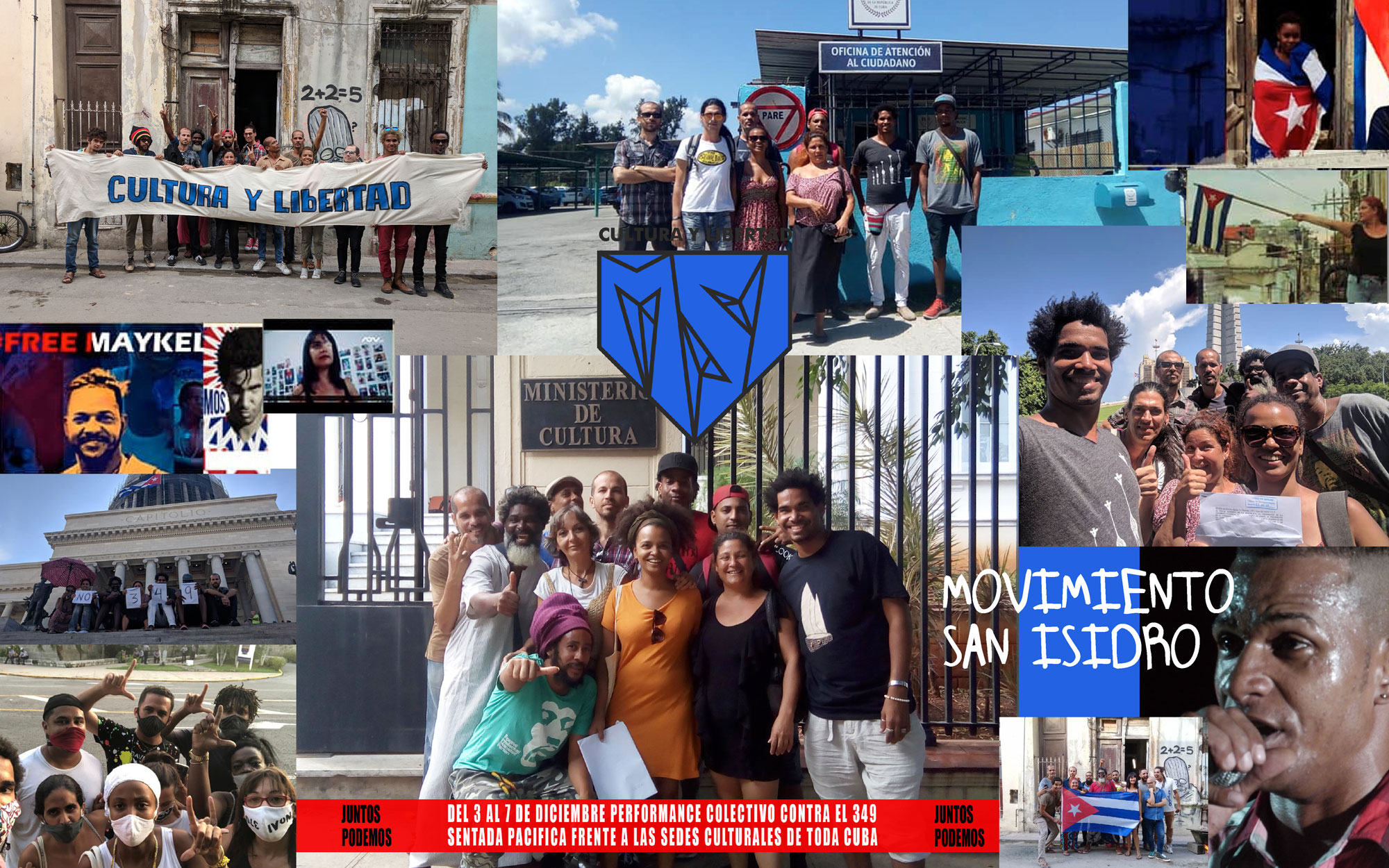
The narrative intention: exploring spaces of the Cuban social narrative in the post-revolutionary period (1970-2023)
Lucía Piedra
The events of 2021 in Cuba, including the strike of the San Isidro Movement, the massive protest in front of the Ministry of Culture in Havana, the formation of the 27N (27 November) Group, the social uprising of 11 July and the ill-fated Civic March of 15 November, sparked a wave of opinions on social networks about the current situation in Cuba. In what many called #cubansplaining, a variety of social media users, including some who had never been to the island, tried to explain the social and political reality surrounding these events. The truth is that this “narrative intention” once again put Cuba in the collective imagination. It was under surgery with an uncertain outcome, and in the waiting room, in despair, the social networks negotiated “the burden of seeing Cuba”: an almost impossible attempt to penetrate the fog to perceive a world full of emotional, social and political characteristics (Muñoz: 2000, 67).
The narrative intention: exploring spaces of the Cuban social narrative in the post-revolutionary period (1970-2023) is a project to think about what has gone down and what is going down with Cuba in mind, without aiming to offer demarcations, but penetrating the current opacity of the island. Let’s see where it takes us. For this, the research is situated in the current context of Cuba, in which it is so difficult to establish a framework of fair, non-patriarchal dialogue and understanding of social reality. The aim is to observe how elements of commentary and tension emerge, including educational experiences such as the Enema Group, the Chair of New Media, the Hannah Arendt Institute of Artivism, social protests such as the San Isidro Movement, the social uprising of 11 July, the 27N Group, the strategic operation of musical genres such as Cuban timba (salsa) and what I will later call the #Hyper-room of Cuban narrativity. These educational projects, social movements and musical genres operate tenaciously to construct the social story. They are examples of a social skill as a way of being (Muñoz, 2000, López-Cano, 2005, Moshed, 2015), to move from ideological discursivity to a narrativity and narratography of resistance, to the political materiality of a rhythm, of artistic practices and of an open dissent. And, finally, I offer my particular vision on the whole illegitimate universe in which Cubans often fictionalize/experience our reality, our daily life.
As a starting point for this genealogy, I will organize the research project into four essays that will cover concepts, problems and contexts, such as the idea of the #Hyper-room, the opacity of Cuban reality and the intersection between narrative and identity in post-revolutionary Cuba. I will focus the first essay on the spaces that emerge beyond and despite the dictates of state policy, considering them as areas where the social story, narration and discursivity are prominent. And I will use a social movement as a reference for this phenomenon, with the historical constellation of other elements that have shaped it. I will continue the research with three other essays that cover educational projects and their particular way of telling realities that are crossed by political reflection and other intertextual reverberations. I will not lose sight of some possible lines of flight that go from the ballrooms to the tenement houses, including the MSI singing “If I can’t dance, what good’s your revolution to me?”, to commit marronage on the State, affections, life, pleasure, survival, dreams, the contradictory and the painful or the joyful.
In this spirit, the objective of this project is to trace a path that begins with a presentation of the research to propose the cultural artifact, whether it is an educational programme, a musical genre or a response, understood narratologically. This will lead to an extended discussion of the social uprisings of 2021 and the San Isidro Movement. What follows is an achronological reconstruction of a genealogy of educational projects from the 1970s to the 2000s, such as DUPP, the Enema Group, the Chair of New Media, the Puré Group, Arte Calle, TTVB, DIP and the Art of Conduct (Useful Art) Chair, with simultaneous questions about the different ways of reading social reality. Finally, to conclude, initiatives such as Ministerio Guaguancuir and the Salsadrome assembly will be used to attempt to open a dialogue on the effect of these possible landscapes on the social reality of the island.
I consider that all these elements show a certain degree of radicality in their relationship with the official discourse, legitimacy and cultural policies, and through other analyses they can give rise to new narratives and lines of flight on the Cuban social context. In tune with this, I like to consider these areas as places in which the story is woven and a way of being, of feeling and of telling reality for Cubans is expressed, unlike any other places and in a way that no other #cubansplaining can argue. The particularities of these emerging movements stand out as foci of coded fiction in which what is denied is reconverted into what is desired and offers the possibility of a certain materiality and emotional healing, and everything that emerges abject, unstable and noisy embodies the glitch (Russell, 2022) of the official narration system.
Thus, I intend for this research project to be organized on a changing hypertextual network that I understand as a model of a hyper-room, in which I imagine that an assembly uses these emerging elements to negotiate their concerns and desires in order to reach a consensus on reality, if that is possible. And at present all this complexity only triggers other concerns: How do unofficial narratives and discourses interact with the established power structures in Cuba? To what extent do they represent forms of cultural and social resistance? How are the narratives constructed by the educational projects of the 1970s, 1980s and 1990s related to the social protest that erupted in 2021? What types of narratives and discourses emerge in them? What kinds of relationships can be agreed between these different ways of constructing the social story in Cuba, between the artistic-educational and the social? What are the mechanisms that trigger these possible relationships between forms of construction of the social story? How do they interact with each other on the question of race, class and gender? What future spaces can be organized through the understanding or “use” of these narratives? What motivations can be traced in the ways of being and doing? Who are the audiences of these unofficial spaces? How do they relate to alternative narratives and discourses? How are these narratives disseminated? How do creative production and political demonstration become artifacts of time management and a way of organizing and providing coherence to various events within a temporal framework for the Cuban social narrative? How do the protagonists of these unofficial spaces see the future of culture and discourse in Cuba? What challenges and opportunities do they perceive? Where does this take us?
Writing specifically about the narrative intention allows us to retell the past without suffocating its potential to think and awaken other futures among the discursivity, narrativity and materiality of the present.
Lucía Piedra (Havana, Cuba) is a researcher, independent curator, adjunct professor at the Universitat Oberta de Catalunya and the University of the Arts of Ecuador and coordinator of the Afro/Black Thoughts, Practices and Activisms Group. She is a member of the Barcelona Culture Council. Her research and projects are crossed by the postcolonial / decolonial perspective, anti-racist activism, interculturality and the intersection between forms of governance, representation, critical thinking and feminisms. She obtained a master's degree in Cultural Studies and Comparative Literature from the Universitat Autònoma de Barcelona, and Museology, and is a graduate of the Higher Institute of Art in Havana (Cuba).
Lucía Piedra's work can be understood as a positioning and also a discursive-creative activity, a methodology open to deviations and the organization of devices that take on very different forms. Through these practices, she wishes to address how the black body is legislated and represented as an underlying and extended model of subjection, the construction of social grammars in relation to the topographies of thought, the relations of enmity and their multiple reconfigurations in contemporary society, spaces of negotiation, spaces of enjoyment, speculative fiction, narrative intersections between sound, text and images, and the forms of representation that reorganize the counternarrative.




